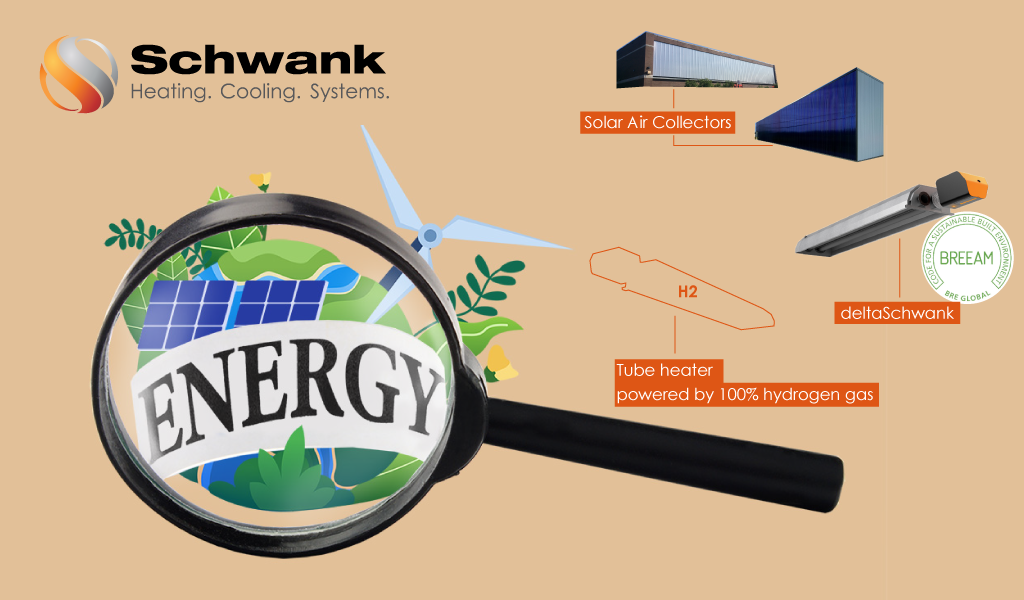
The search to find different energy sources and divert away from fossil fuels has in the past been primarily concerned with environmental matters, in particular the effect on climate change. But the Russian invasion of Ukraine has brought this matter into far sharper focus.
A recent article by Forbes offers their view of how the war would affect energy policies in Europe: “By 2024, we estimate that 34% of Europe’s energy will be produced by renewables and nuclear, which is two percentage points more than our pre-war forecast. Energy emissions will decrease by a similar amount.”
So the need to diversify the sources of energy that power industry, commerce and public utilities, and to develop the technology to use them efficiently and safely, has never been greater.
Harnessing the potential of hydrogen
Schwank has been established for over 80 years and invented the first ever gas-fired infrared heater. And the company’s development has been marked by innovations in HVAC and climate solutions, focused on energy efficiency and emissions reduction.
Now Schwank engineers have made a breakthrough by developing a 100% hydrogen powered tube heater.
This new tube heater had to be equipped with a completely new burner technology. In Schwank’s laboratories in Cologne, Germany, the ignition and combustion behaviour of hydrogen in a closed, small-volume system was simulated on the computer using complex calculation models. Using 100% hydrogen as a fuel is extremely difficult because of its unpredictable nature. It can be highly inflammable, and the project required frequent and rigorous testing for the safety as well as the performance of the heater.
It will be some time before this new tube heater goes into volume production, but it is also worth mentioning that all new Schwank heaters can already run on a 20% mix of hydrogen with natural gas whenever that option is available via the existing energy networks.
Capturing the power of the sun
The quest for energy diversity and sustainability has also prompted Schwank to introduce a new product line which uses the power of the sun in an innovative and highly effective method.
While solar power generation is generally associated with capturing the sun’s energy via solar arrays for conversion into electricity, Schwank’s new Solar Air Collectors work in a very different way. In fact, there is no conversion process involved in creating the heat that they produce.
These new solarSchwank products for renewable heat generation are façade-mounted systems. The actual solar air collector consists of perforated, durable, aluminium, with a solar active surface (absorber). This selective coating ensures a highly efficient conversion of solar energy into thermal energy when the sun’s rays meet the solar active surface.
The heated air is then released into the air layer below the absorber and fed directly into the building assisted by a fan. The whole process is carried out without any conversion processes or use of a heat exchanger. Thanks to this efficient method, heating costs can be reduced by up to 50% and CO2 emissions can also be significantly lowered.
These solarSchwank systems are available with or without fresh air supply. The air collectors are easy and quick to install at both new and existing buildings. Thanks to the use of lightweight materials, they can be mounted on almost any building facades.
Progress is being made
Reducing the carbon footprint of industrial and commercial heating and cooling systems and reinforcing energy security to counter international supply instability have been long-standing objectives in the HVAC sector.
Schwank provides an example of how leading HVAC companies are investing time and resources to utilise sustainable sources of energy to achieve these goals.

